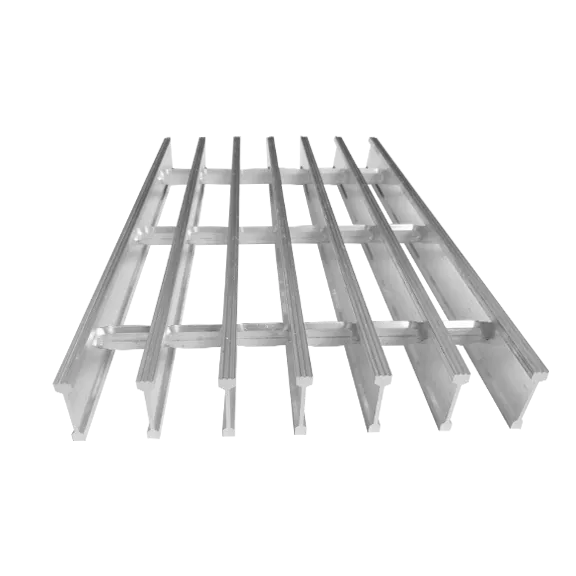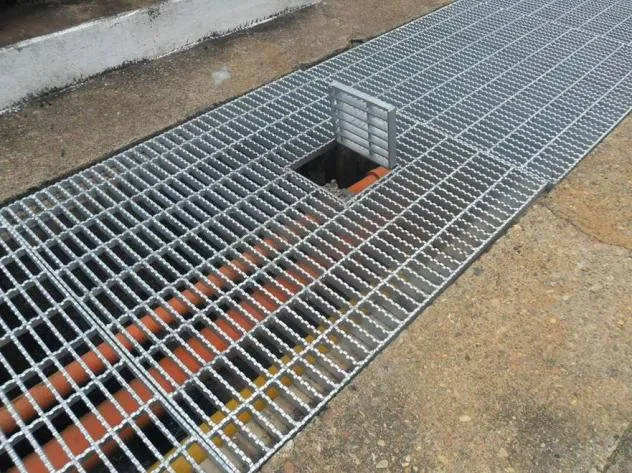- Industrial zone, South of Anping Town, Hengshui, Hebei, China.
- sales@hfpetromesh.com
- +86-18931809706
 Afrikaans
Afrikaans  Albanian
Albanian  Amharic
Amharic  Arabic
Arabic  Armenian
Armenian  Azerbaijani
Azerbaijani  Basque
Basque  Belarusian
Belarusian  Bengali
Bengali  Bosnian
Bosnian  Bulgarian
Bulgarian  Catalan
Catalan  Cebuano
Cebuano  Corsican
Corsican  Croatian
Croatian  Czech
Czech  Danish
Danish  Dutch
Dutch  English
English  Esperanto
Esperanto  Estonian
Estonian  Finnish
Finnish  French
French  Frisian
Frisian  Galician
Galician  Georgian
Georgian  German
German  Greek
Greek  Gujarati
Gujarati  Haitian Creole
Haitian Creole  hausa
hausa  hawaiian
hawaiian  Hebrew
Hebrew  Hindi
Hindi  Miao
Miao  Hungarian
Hungarian  Icelandic
Icelandic  igbo
igbo  Indonesian
Indonesian  irish
irish  Italian
Italian  Japanese
Japanese  Javanese
Javanese  Kannada
Kannada  kazakh
kazakh  Khmer
Khmer  Rwandese
Rwandese  Korean
Korean  Kurdish
Kurdish  Kyrgyz
Kyrgyz  Lao
Lao  Latin
Latin  Latvian
Latvian  Lithuanian
Lithuanian  Luxembourgish
Luxembourgish  Macedonian
Macedonian  Malgashi
Malgashi  Malay
Malay  Malayalam
Malayalam  Maltese
Maltese  Maori
Maori  Marathi
Marathi  Mongolian
Mongolian  Myanmar
Myanmar  Nepali
Nepali  Norwegian
Norwegian  Norwegian
Norwegian  Occitan
Occitan  Pashto
Pashto  Persian
Persian  Polish
Polish  Portuguese
Portuguese  Punjabi
Punjabi  Romanian
Romanian  Russian
Russian  Samoan
Samoan  Scottish Gaelic
Scottish Gaelic  Serbian
Serbian  Sesotho
Sesotho  Shona
Shona  Sindhi
Sindhi  Sinhala
Sinhala  Slovak
Slovak  Slovenian
Slovenian  Somali
Somali  Spanish
Spanish  Sundanese
Sundanese  Swahili
Swahili  Swedish
Swedish  Tagalog
Tagalog  Tajik
Tajik  Tamil
Tamil  Tatar
Tatar  Telugu
Telugu  Thai
Thai  Turkish
Turkish  Turkmen
Turkmen  Ukrainian
Ukrainian  Urdu
Urdu  Uighur
Uighur  Uzbek
Uzbek  Vietnamese
Vietnamese  Welsh
Welsh  Bantu
Bantu  Yiddish
Yiddish  Yoruba
Yoruba  Zulu
Zulu
- Afrikaans
- Albanian
- Amharic
- Arabic
- Armenian
- Azerbaijani
- Basque
- Belarusian
- Bengali
- Bosnian
- Bulgarian
- Catalan
- Cebuano
- Corsican
- Croatian
- Czech
- Danish
- Dutch
- English
- Esperanto
- Estonian
- Finnish
- French
- Frisian
- Galician
- Georgian
- German
- Greek
- Gujarati
- Haitian Creole
- hausa
- hawaiian
- Hebrew
- Hindi
- Miao
- Hungarian
- Icelandic
- igbo
- Indonesian
- irish
- Italian
- Japanese
- Javanese
- Kannada
- kazakh
- Khmer
- Rwandese
- Korean
- Kurdish
- Kyrgyz
- Lao
- Latin
- Latvian
- Lithuanian
- Luxembourgish
- Macedonian
- Malgashi
- Malay
- Malayalam
- Maltese
- Maori
- Marathi
- Mongolian
- Myanmar
- Nepali
- Norwegian
- Norwegian
- Occitan
- Pashto
- Persian
- Polish
- Portuguese
- Punjabi
- Romanian
- Russian
- Samoan
- Scottish Gaelic
- Serbian
- Sesotho
- Shona
- Sindhi
- Sinhala
- Slovak
- Slovenian
- Somali
- Spanish
- Sundanese
- Swahili
- Swedish
- Tagalog
- Tajik
- Tamil
- Tatar
- Telugu
- Thai
- Turkish
- Turkmen
- Ukrainian
- Urdu
- Uighur
- Uzbek
- Vietnamese
- Welsh
- Bantu
- Yiddish
- Yoruba
- Zulu
Heavy-Duty Floor Trench Drain Grates Durable Iron & Traffic-Rated Designs
This comprehensive guide covers essential aspects of floor trench drain systems:
- Fundamentals and material science behind effective drainage
- Load capacity requirements across environments
- Quantifiable performance data analysis
- Leading manufacturing technologies compared
- Material selection and technical specifications
- Custom design engineering considerations
- Demonstrated installations and applications

(floor trench drain grates)
The Essential Functionality of Modern Floor Trench Drain Grates
Contemporary floor trench drain grates
represent sophisticated engineering solutions designed to address critical water management challenges. These components serve as the visible interface between surface environments and subsurface drainage infrastructure, requiring simultaneous attention to hydraulic efficiency, structural integrity, and safety compliance. Unlike conventional point drainage, trench systems create continuous linear channels that accelerate water evacuation - particularly important in areas with significant precipitation volumes or frequent washdown procedures. The structural role of these grates extends beyond mere coverage; they form load-bearing surfaces that must maintain dimensional stability under thermal variation, chemical exposure, and mechanical stress while preventing debris ingress. Industry research indicates properly specified trench drain systems reduce standing water accidents by 68% compared to traditional drainage methods.
Material Selection and Load Classifications
Selection between ferrous and polymer compositions presents fundamental performance trade-offs. Iron trench drain grates offer exceptional compressive strength exceeding 80,000 psi (550 MPa), making them suitable for heavy industrial applications like cargo terminals where dynamic loads reach 20-ton per axle ratings. These metallurgical solutions undergo specialized heat treatments and protective coatings such as fusion-bonded epoxy that provide corrosion resistance exceeding 1,000 salt spray hours. Conversely, polymer grates utilizing fiberglass-reinforced polypropylene deliver distinct advantages in chemical processing plants where acid resistance to pH 1-14 is mandatory. Non-conductive composite materials additionally eliminate electrical hazards in maintenance areas. Both material categories include UV-stabilized formulations to prevent molecular degradation from ultraviolet exposure, maintaining structural performance and color retention for decades.
Critical Traffic Rating Considerations
Load classification systems standardize grate selection according to anticipated traffic patterns. Light-duty Class A systems (1,500 lbs/680kg) satisfy pedestrian mall requirements, while Class D traffic rated trench drain grates withstand forklift traffic at 22,000 lbs (10,000kg). Airport taxiways mandate Class F solutions certified for 100,000 lbs (45,360kg) wheel loads at 70mph (113 km/h) impact stresses. The structural engineering incorporates finite element analysis to optimize load distribution, with top-tier manufacturers validating performance through third-party crash testing exceeding EN1433 standards. Fire lane specifications require UL-certified 75,000 lb (34,000 kg) emergency vehicle load ratings without measurable deflection. Temperature resilience ranging from -40°F to +140°F (-40°C to +60°C) ensures dimensional stability across climate zones, with polymer options maintaining ductility at cryogenic temperatures common in food processing facilities.
Performance Data and Impact Metrics
Hydraulic engineering significantly influences grate efficiency parameters:
| Grate Type | Flow Rate | Debris Handling | Service Life | Maintenance Cycles |
|---|---|---|---|---|
| Standard Slot | 15-25 l/s/m | Limited | 15 years | Quarterly |
| Heavy-Duty | 30-40 l/s/m | Moderate | 20-25 years | Biannual |
| HE Polymer | 42-55 l/s/m | High | 30+ years | Annual |
Installation data confirms optimized grate geometries reduce water clearance times by 47% compared to standard designs. Slip resistance testing demonstrates critical angles exceeding 35° on polymer surfaces with specialized aggregate inclusions. Noise attenuation qualities achieve 7-9 dB reduction in vehicle areas through vibration-damping materials. Lifecycle cost analysis reveals composite solutions yield 18% lower TCO over two decades despite 20% higher initial investment.
Manufacturing Technology Comparison
Production methodologies significantly influence product capabilities:
| Process | Precision | Material Efficiency | Surface Options | Lead Time |
|---|---|---|---|---|
| Sand Casting | ±1.5mm | 75% yield | Limited | 14 weeks |
| Investment Casting | ±0.2mm | 85% yield | Diverse | 10 weeks |
| Composite Molding | ±0.05mm | 98% yield | Unlimited | 4 weeks |
Modern automated foundries achieve dimensional accuracies within 0.01 inches (0.25mm) for high-volume ductile iron production. Composite facilities utilizing RTM (Resin Transfer Molding) create monolithic structures without weak points at 400-ton clamping pressures. Surface treatments such as ceramic bead blasting create anchor patterns enhancing coating adhesion for epoxy finishes maintaining integrity beyond 10,000 abrasion cycles. Leading US and EU facilities maintain ISO 9001:2015 certification with full material traceability from smelting to final inspection.
Custom Engineering Solutions
Site-specific challenges necessitate tailored drainage approaches. Vehicular tunnel projects require integrated catch basins that separate hydrocarbons meeting EPA 40 CFR 112 compliance. Food processing areas utilize radius-cornered channels with continuous slope adjustments between 0.5%-5% grades. High-heel tolerance demands aperture spacing under 0.5 inches (13mm), while ADA compliance requires openings maintaining ¼" ball passage. Stainless steel inserts prevent electrolytic corrosion in marine environments. Custom marking systems embed RFID tags for maintenance tracking and laser-etched directional indicators. Thermal expansion joints accommodate ¾" (19mm) movement through telescoping receivers, while seismic zones utilize full-channel neoprene isolation membranes absorbing 1.5" (38mm) displacement during seismic events.
Verified Installation Achievements
Case studies demonstrate the capabilities of engineered floor trench drain grates in challenging environments. A refrigerated distribution center (-20°F/-29°C) deployed hybrid polymer-iron systems managing daily 12,000-gallon washdowns with grate temperatures cycling 100°F (56°C) differentials without joint failure. Motorsport facilities utilize slotted stainless steel designs handling 125dB acoustic loads and hydrocarbon exposure while supporting 3,000 lb/in linear loads during pit stops. Recent smart city integrations embed IoT sensors within municipal trench systems monitoring flow rates and debris accumulation, reducing maintenance costs by 35% through predictive scheduling. Airport installations demonstrate composite solutions handling deicing fluid concentrations to 60% glycol while maintaining Class F load ratings for A380 superjumbo service vehicles.

(floor trench drain grates)
FAQS on floor trench drain grates
Q: What are the primary uses of floor trench drain grates?
A: Floor trench drain grates are designed to channel water or debris in commercial, industrial, or residential settings. They are commonly installed in bathrooms, kitchens, or outdoor areas to prevent flooding. Their durable construction ensures long-term performance.
Q: How do iron trench drain grates compare to other materials?
A: Iron trench drain grates offer superior strength and durability, ideal for heavy-load environments. However, they may require coatings to prevent rust. Alternatives like stainless steel or polymer are lighter and corrosion-resistant.
Q: What maintenance is needed for traffic-rated trench drain grates?
A: Traffic-rated trench drain grates need regular debris removal to prevent clogs. Inspect for structural wear, especially in high-traffic areas. Cleaning with non-corrosive solutions ensures longevity.
Q: Can floor trench drain grates support vehicle traffic?
A: Only traffic-rated trench drain grates are engineered to withstand vehicle loads, meeting standards like BS EN 1433. Standard floor grates may crack under vehicular pressure. Always check load-class ratings before installation.
Q: What factors determine the choice of iron vs. polymer trench drain grates?
A: Iron grates suit high-strength needs but require rust prevention. Polymer grates are lightweight, corrosion-resistant, and ideal for chemical-heavy areas. Consider usage environment and load requirements when selecting.
-
The Role of Shale Shaker ScreensNewsJun.11,2025
-
Steel Grating Remains a Superior ChoiceNewsJun.11,2025
-
Does Safety Net Mean in the Modern Construction WorldNewsJun.11,2025
-
Concrete Weight Coating in Offshore Pipeline StabilityNewsJun.11,2025
-
Choosing the Right Steel Grating CompanyNewsJun.11,2025
-
Best Shale Shaker Screen for SaleNewsJun.11,2025